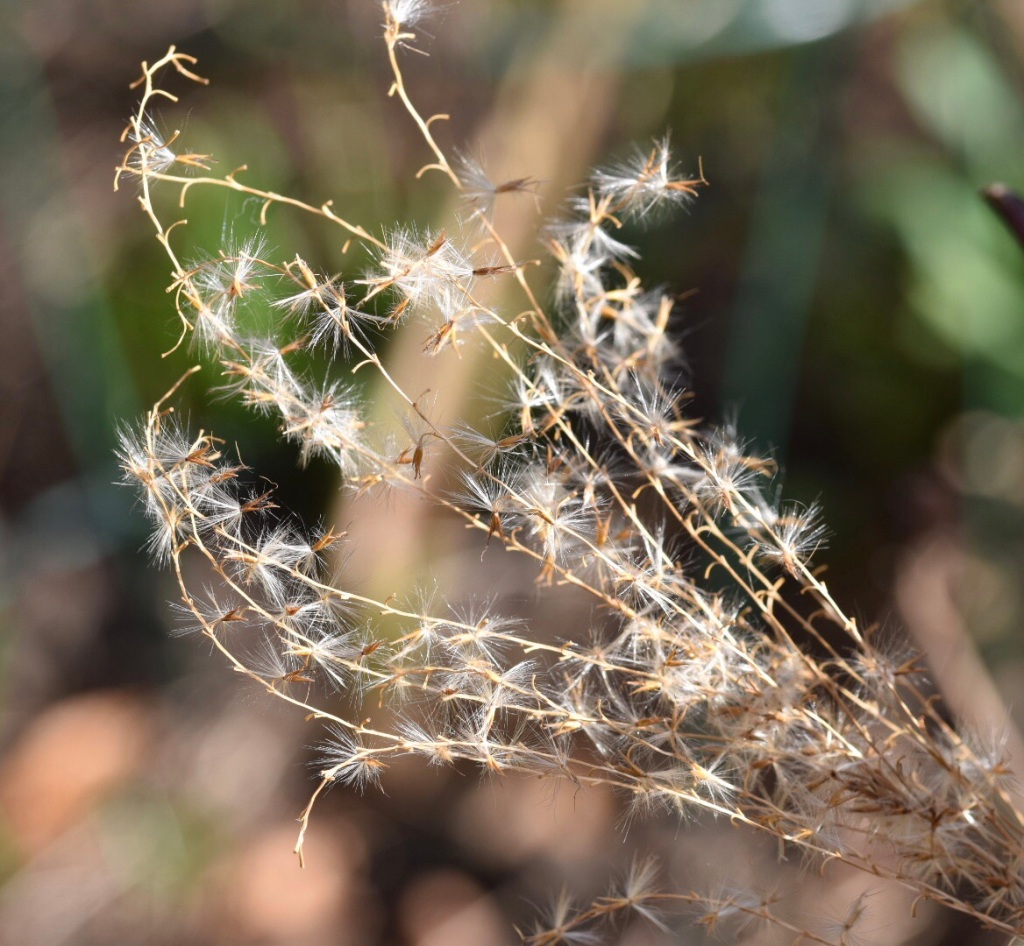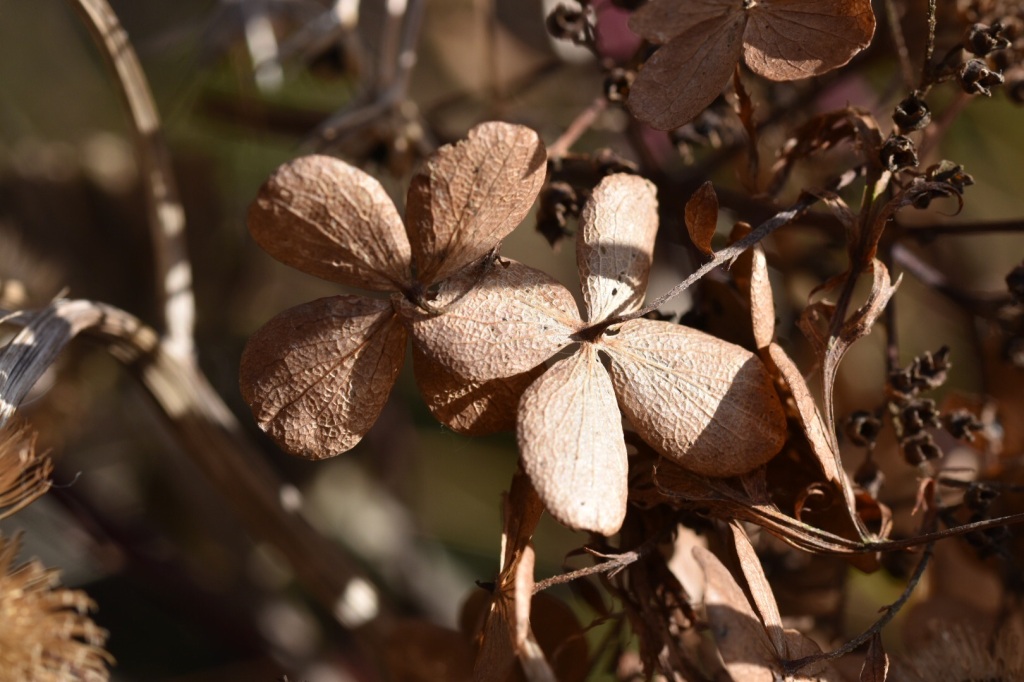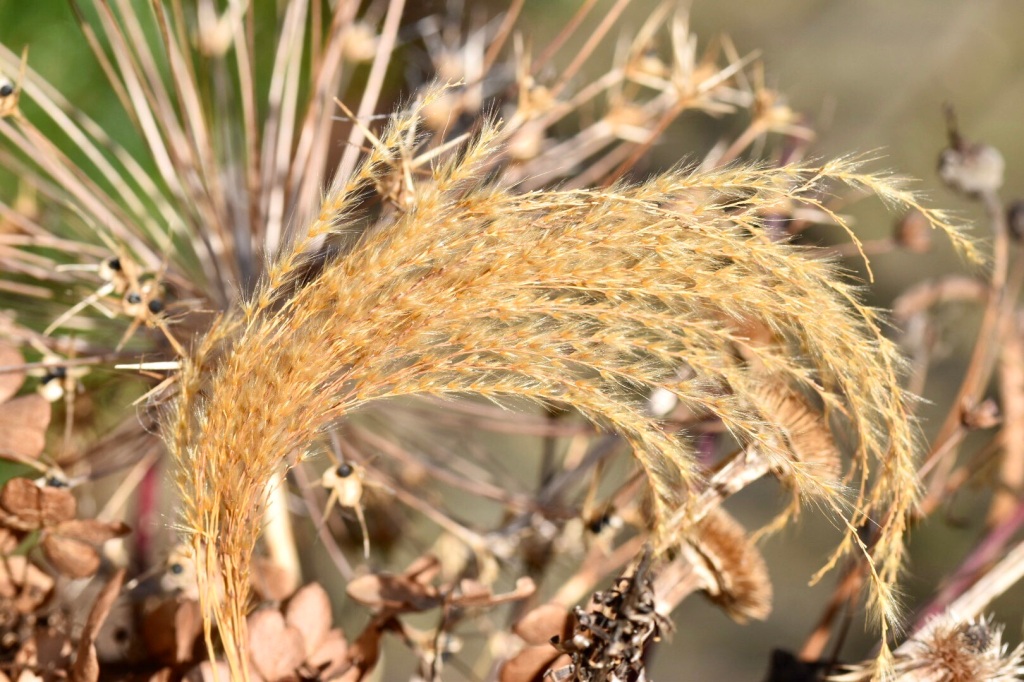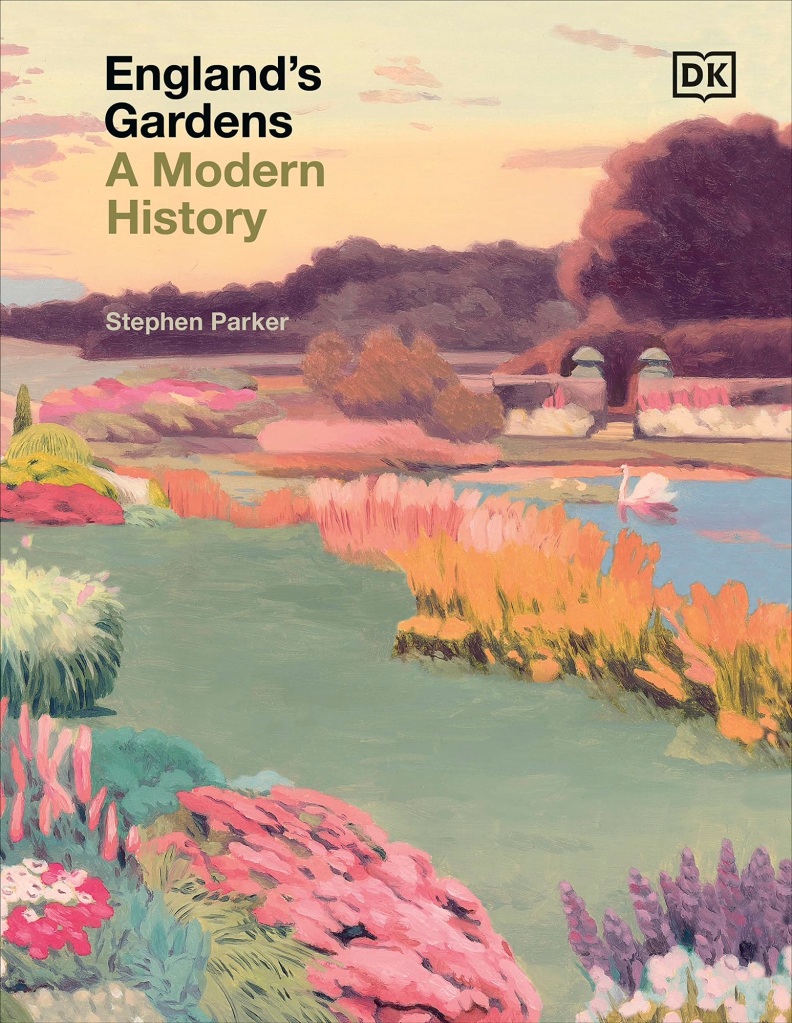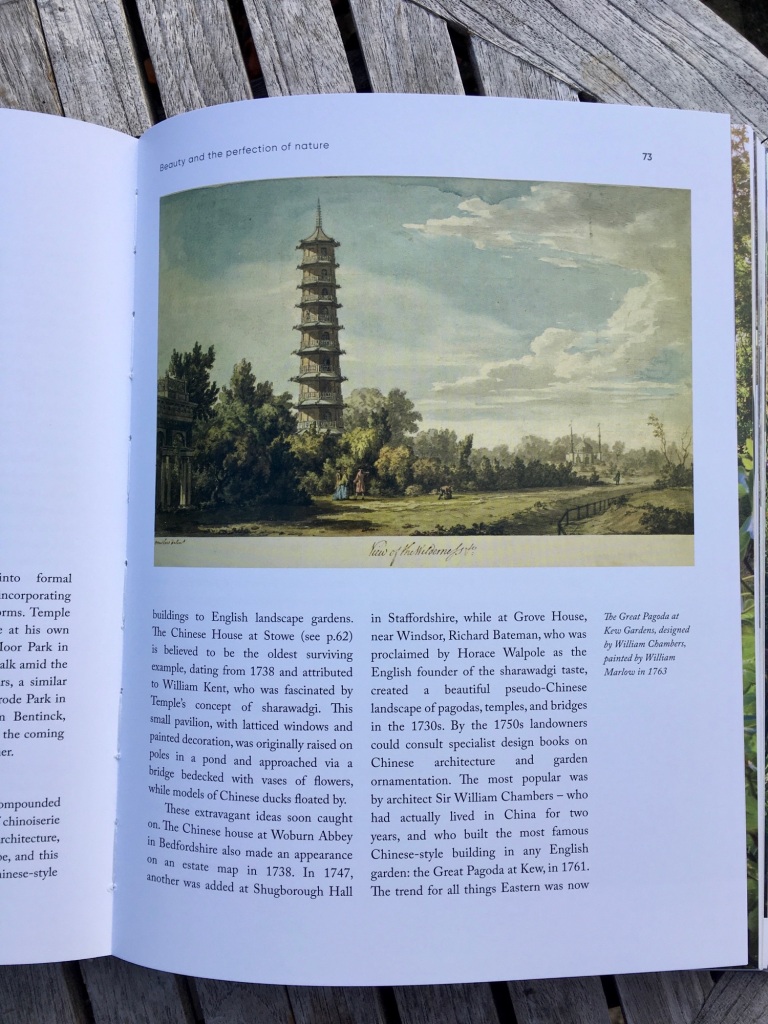
Among the 9,000 snowdrops on display at Barnsdale Gardens is this beautiful semi-double variety with long, thin pointed outer segments. Isn’t she a beauty! Such a pretty name too, ‘Starling.’ I spotted it right at the start of our winter walk-and-talk event hosted by Barnsdale owner Nick Hamilton. Once seen, never forgotten. I’m not much of a galanthophile, but Starling captivated me. Such an unusual snowdrop with dark green inner segments and a lovely growth habit, having flowers that tilt upwards which means you don’t have to get down on your hands and knees to appreciate them.
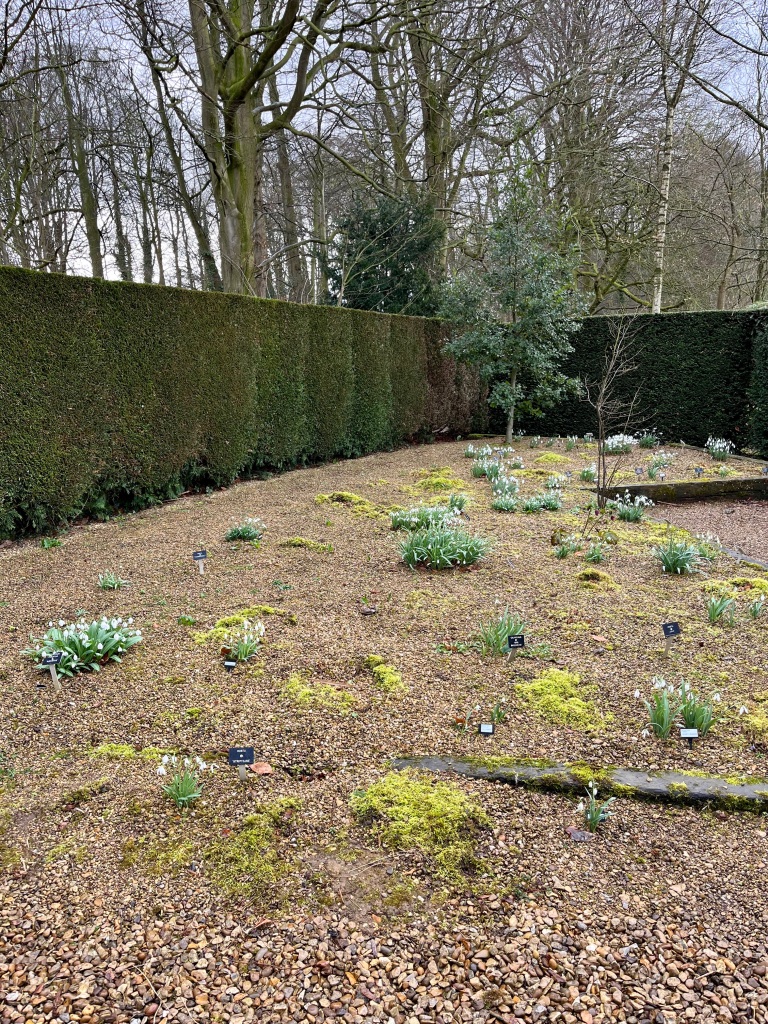
Many of the special snowdrops are displayed in a raised bed surrounded by gravel. Rain doesn’t splash them with mud. Heavy rain has been such a problem this winter and many snowdrops in my garden have either been swamped or munched by slugs. I hadn’t thought of growing them in this way, but I might try it out in a spare corner of the garden.

Galanthus Hippolyta is also thriving and forming a good substantial clump. This is one of the Greatorex doubles, ‘beautifully formed with rounded bells, filled with green edged petticoats’ says the information on a five-page fact sheet supplied by the gardens. All the snowdrops are carefully and clearly labelled and the fact sheet is a great help with identifying all the different varieties.
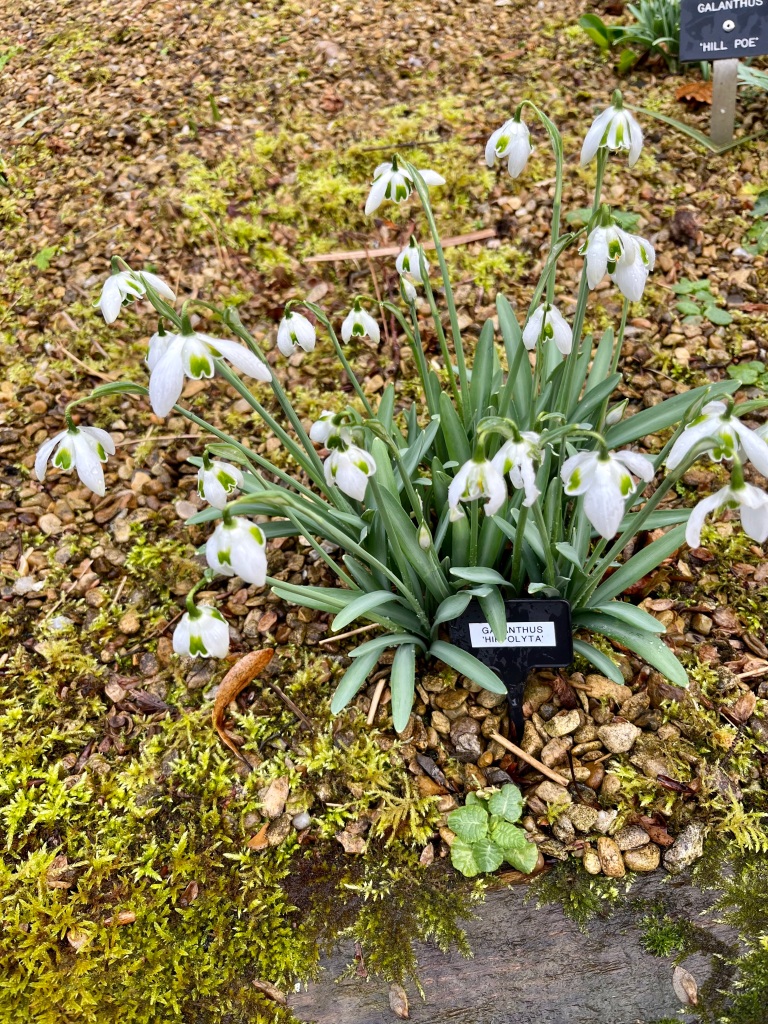

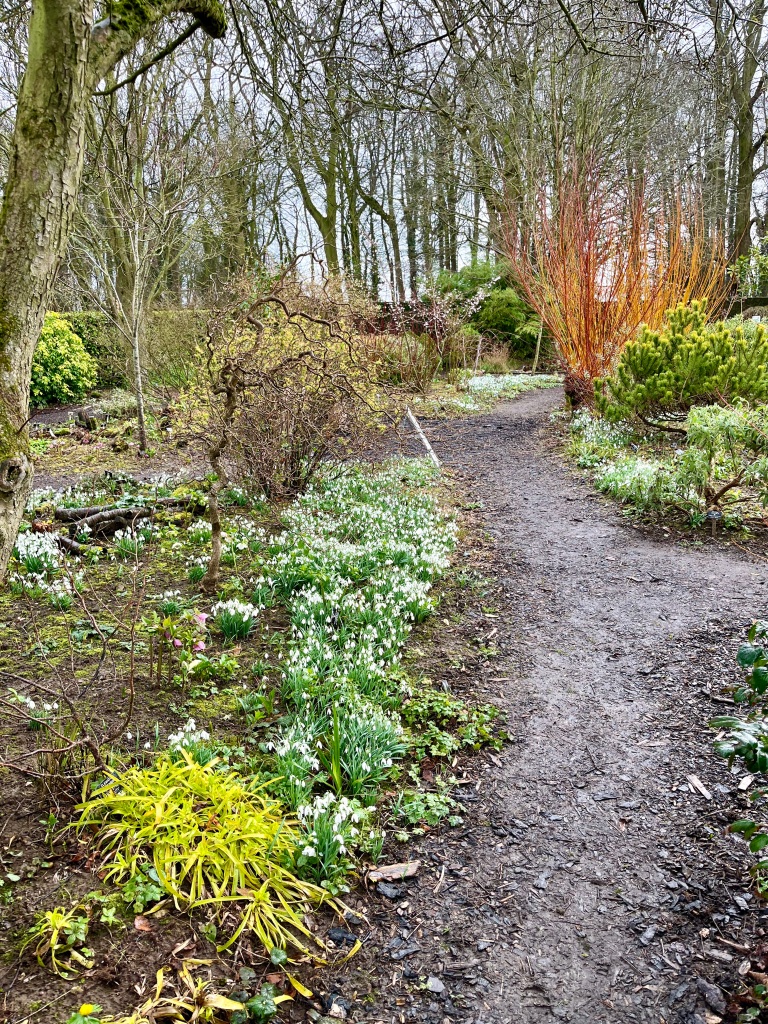
Snowdrops are just one of the attractions in the Winter Border. This garden was created in memory of Nick’s father Geoff Hamilton who presented the BBC Gardeners World show from the site until his death in 1996.
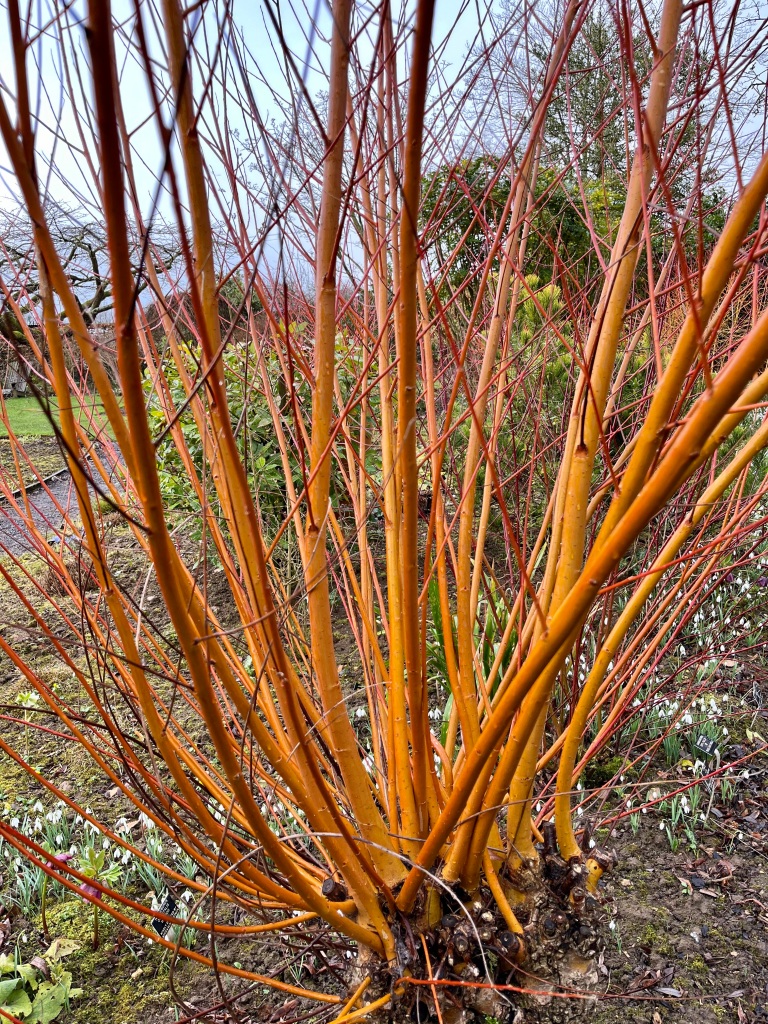
Paths are lined with evergreens, scented plants, and trees and shrubs with colourful bark for winter interest.

The beauty of having a walk- and-talk tour is seeing the plot through expert’s eyes, and picking up hints and tips on cultivation. Nick explains that these beautiful willows produce the best colour on new stems. Plants will be pruned virtually to the ground or to a low stump so that new stems will grow for next winter’s display.

Willows certainly make a design statement, and Nick advises to plant them where the sun shines through them to highlight their bright colours.
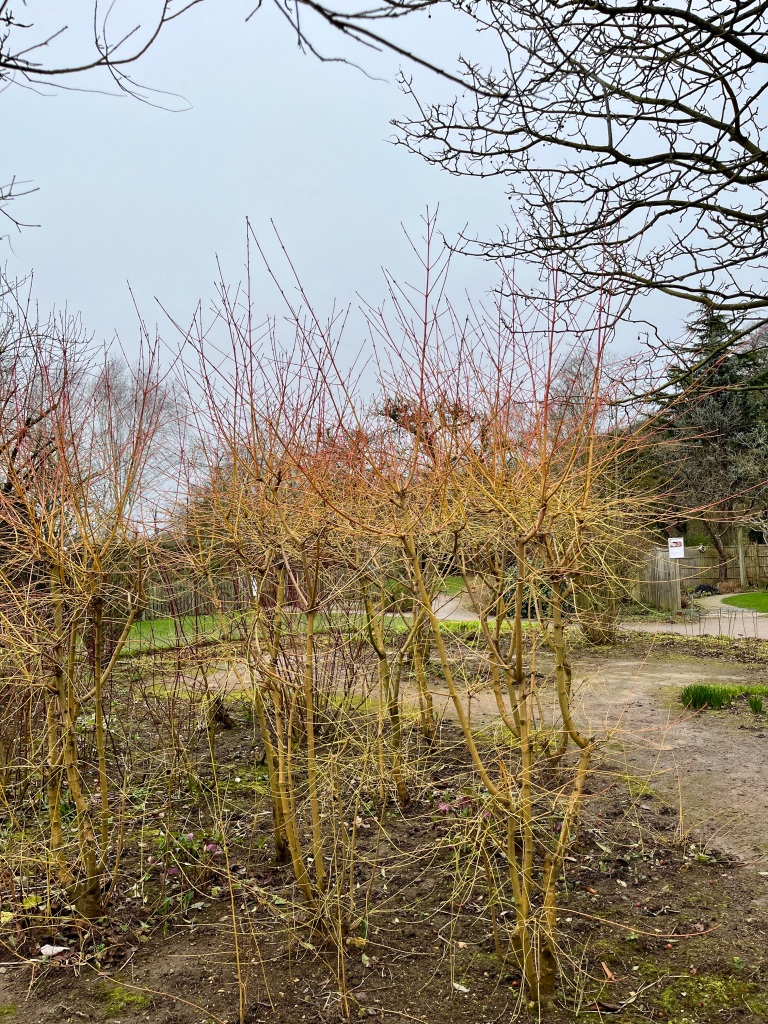
Whereas the willows are quite drastically trimmed, Nick advises a more selective approach for pruning these dogwoods. I have similar Cornus Midwinter Fire, and carefully trim back the side shoots and gently shape up the plants. Cornus Westonbirt which has bright red stems are pruned virtually to the ground, but these orange-stemmed dogwoods take a long time to recover if pruned too severely.

Information boards are posted throughout the garden which help our understanding of the reasoning behind the plantings.

It was fascinating to walk around the garden spotting all the trees, shrubs, bulbs and perennials donated to the memorial garden. Gordon Rae is a good friend of the family, and mine, and his name crops up several times with collections of different snowdrops, for example. I noticed trees from Hilliers and plants from TV and radio gardener Martin Fish- among many others.

I particularly love this view of the bandstand and terracotta urn.
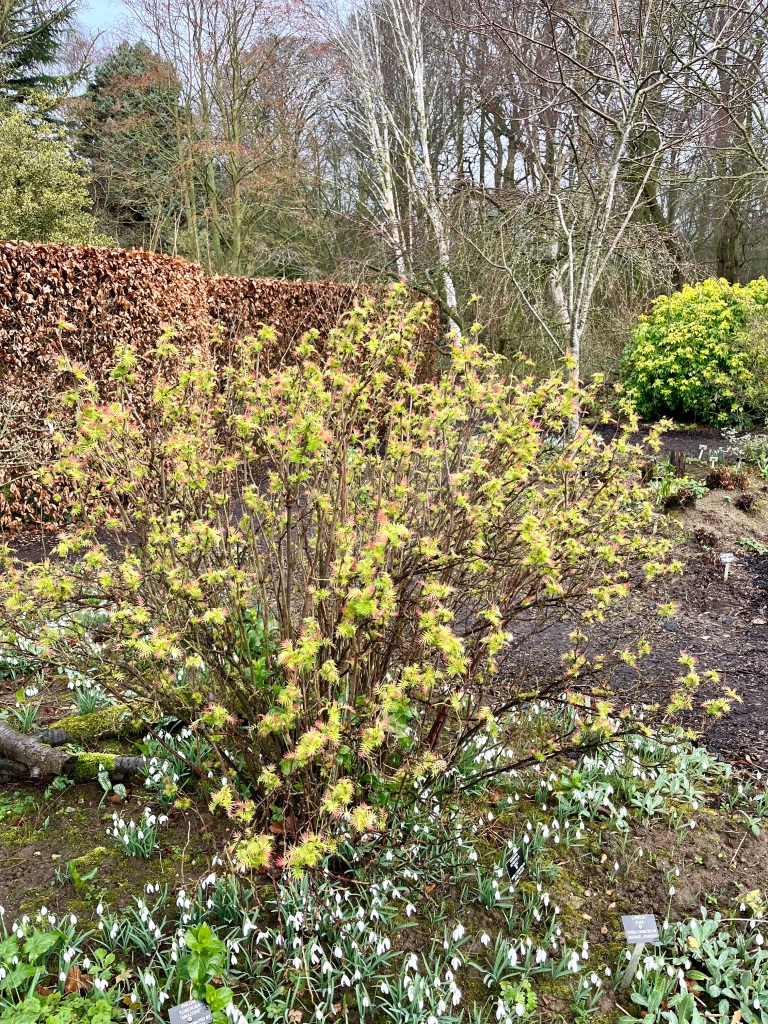

Winter flowering cherries also looking very cheerful and brighten up a cold wet day.
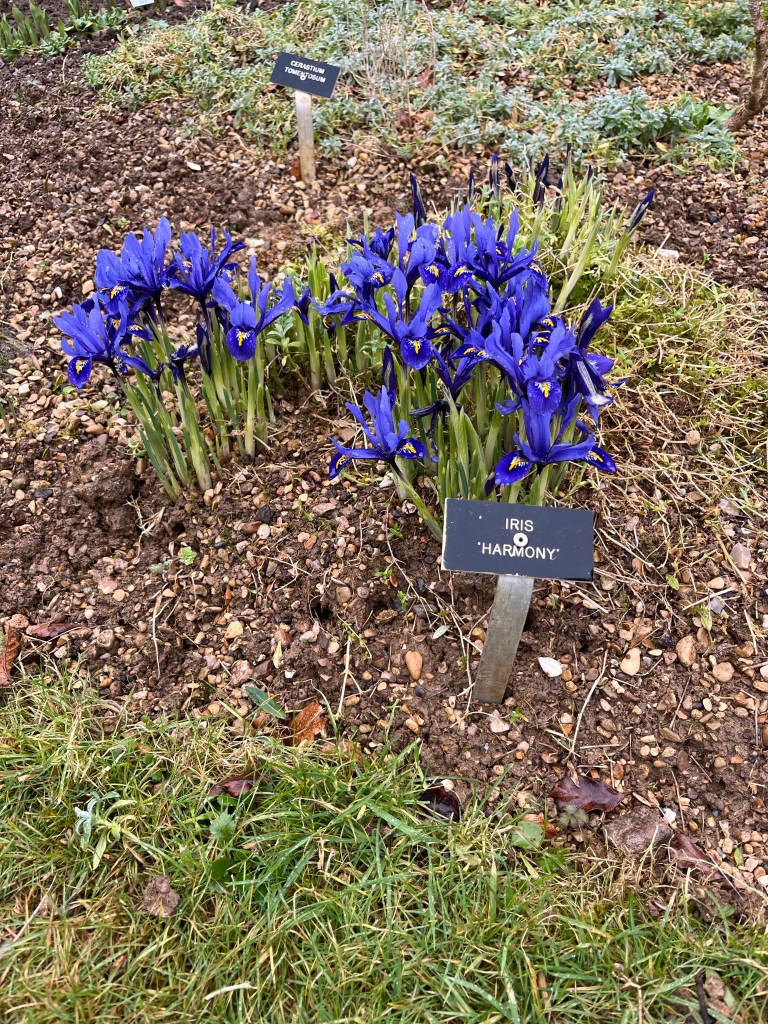
This little Iris Harmony pops up in patches all over the garden.

Nick Hamilton took over the garden when Geoff died and has continued to plant and develop the plot. There are 38 individual gardens over an 8 acre site.

We continued the tour through the Woodland garden, and on to the impressive vegetable plots where courses are held throughout the year on growing fruit and vegetables and pruning. The gardens are run along organic lines, as Geoff set out to do. Nick continues to grow organically without chemicals and with wildlife in mind.
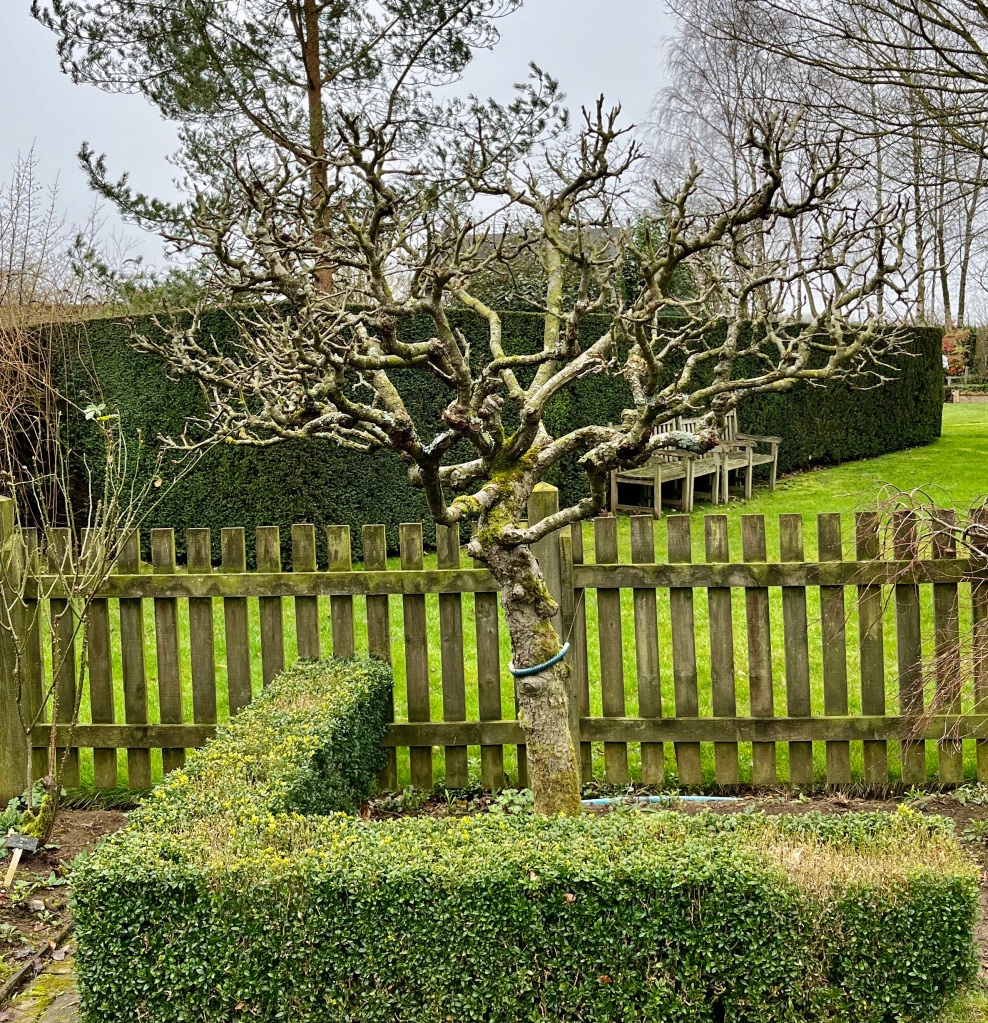
Nick explains how fruit trees can be grown in small spaces by choosing dwarfing rootstocks and by pruning.

These espalier fruit trees take up little space and form an attractive shape throughout the year. There will be blossom in spring and apples and pears in late summer.

These small fruit trees are part of the Dan Pearson cottage garden.

I couldn’t resist a peep inside that beautiful little greenhouse.

I found scented pelargoniums, some still in flower in February.

And succulents and cacti, alongside trays of seedlings growing on for planting out later in spring.

I must mention the cafe, which served a very tasty and substantial cooked breakfast before our tour. I don’t usually eat a hot breakfast, but tried the vegetarian menu and can highly recommend it. A lovely warm start to a few hours spent walking around the gardens. And there was just time to try the tea and cakes at the end of our tour! It would have been rude not to sample them! The lemon sponge is divine!
For more information on Nick’s walk and talks and other events through the year take a look at the website here:
https://barnsdalegardens.co.uk/
I’ll be going back for more events. There’s plenty on offer for Mother’s Day on 10th March and Easter between 29th March and 1st April (including Easter egg hunts for children). The gardens open all year round, only closing at Christmas, 24th, 25th and 26th December.
Note: I was invited to this event as a guest. I’ve given my honest review of the morning. I can highly recommend the ‘walk and talk’ events. A lovely breakfast followed by a wander around a beautiful garden is just what’s needed after such a cold, dark, wet winter, just as the garden is starting to wake up and shine. I feel invigorated to add much more colour to my own plot. And I’m searching for that very pretty snowdrop.
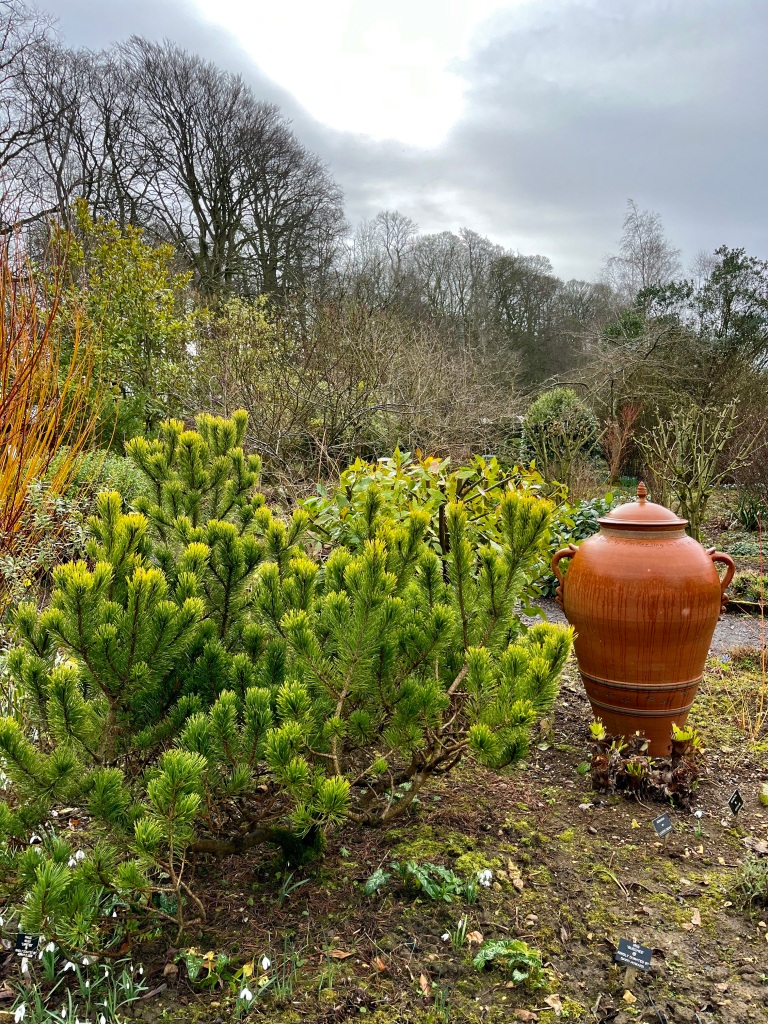
I hope you’ve enjoyed this ‘winter tour’ of Barnsdale Gardens. Have any of you visited in winter? I’ve only ever visited in summer before, so it was a revelation how much there’s to see. Get in touch and share your favourite part of Barnsdale. I haven’t even mentioned the Paradise Garden! That will wait for next time….

